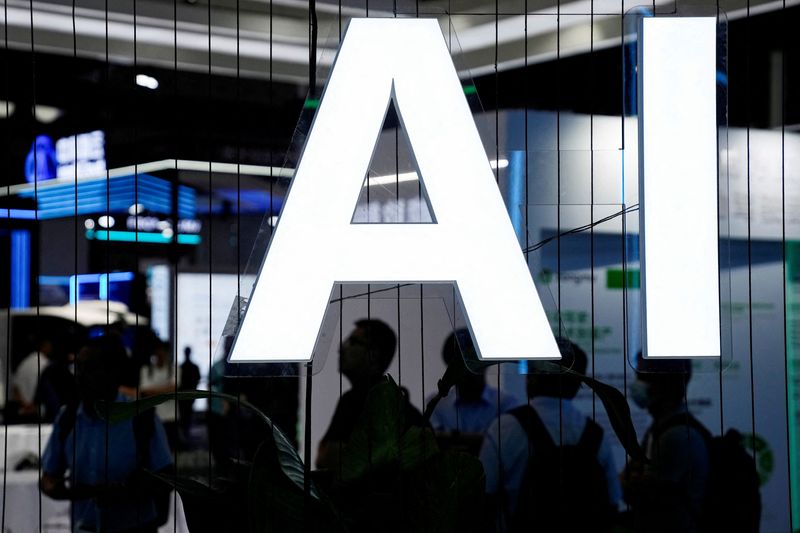Bitcoin set for a rebound that could stretch toward $100000, BTIG says
Investing.com -- The rapid build-out of AI infrastructure by OpenAI, Microsoft (NASDAQ:MSFT), Meta (NASDAQ:META), and Google (NASDAQ:GOOGL) has sparked questions over whether demand will be strong enough to justify the more than $400 billion in AI capex projected for 2025—and whether the industry risks overbuilding.
Analysts at UBS identfy three pillars of AI demand—model training, consumer-facing inference, and enterprise applications.
The bank sees continued momentum in the first two. “We conclude that model training demands will continue to grow significantly,” UBS writes, citing OpenAI’s expanded deals with Oracle (NYSE:ORCL) and CoreWeave, as well as Microsoft’s sustained infrastructure investments.
Consumer demand is also strong, with ChatGPT exceeding 600 million weekly active users and rivals scaling in parallel.
“We think in the near-term, GPU demand remains heavily consumer-driven,” the report states.
But the enterprise front remains a weak link. UBS finds that most large firms are still in proof-of-concept stages, slowed by governance challenges, unclear return on investment (ROI), and a preference for bespoke applications.
“AI revenue generation from public software application firms has been modest,” the report states, adding that only 14% of large companies are currently deploying AI at scale.
Price deflation and rising competition from startups are further constraining monetization for incumbent software vendors.
Still, UBS remains constructive. It forecasts a growing handoff from consumer and model training demand to enterprise-driven growth in 2026 and beyond.
The key risk, the bank says, is a scenario where early demand engines cool before enterprise adoption accelerates—an outcome it sees as “non-zero but manageable.”
Until then, the AI demand story continues to rest on model training and consumer inference. Analysts believe this demand will continue to support elevated GPU needs, in turn driving broader investment in cloud infrastructure, memory, and networking hardware.
On the investment side, UBS maintains a bullish stance on Nvidia (NASDAQ:NVDA), with Broadcom (NASDAQ:AVGO) highlighted as another key Tier 1 beneficiary of growing compute and networking needs.
Micron (NASDAQ:MU) is also noted as a peripheral beneficiary tied to memory demand. Among global chipmakers, Taiwan Semiconductor Manufacturing (NYSE:TSM) is favored for its position in the AI supply chain.
In software, UBS prefers infrastructure- and data-focused names such as Oracle and Snowflake (NYSE:SNOW) over traditional SaaS companies, though ServiceNow (NYSE:NOW) is seen as better positioned among large-cap peers.
In the U.S. internet space, Meta is expected to benefit from both consumer-facing tools like Meta AI and its advertiser platform Advantage+.
Hardware names such as Arista Networks (NYSE:ANET), Ciena (NYSE:CIEN), Quanta Services Inc (NYSE:PWR), and Wistron Corp (TW:3231) are also seen as highly exposed to the ongoing AI investment cycle.
UBS’ report also highlights that compute intensity continues to rise across AI workloads. Even as the cost per million tokens drops—falling from $115 in 2023 to an expected $2 by 2027—requirements for processing power are expanding rapidly due to increasingly complex models and longer context windows.
The result is a projected surge in the AI accelerator market from $125 billion in 2024 to over $300 billion in 2027.
Meanwhile, sovereign AI initiatives and public-private partnerships are emerging as an additional demand catalyst. Projects such as the Stargate AI factory in Texas, OpenAI’s multi-cloud approach, and proposed infrastructure builds in Abu Dhabi all point to long-term structural support for AI capex.
While many large enterprises are still navigating data readiness and integration hurdles, UBS notes that more than 60% of companies surveyed have at least some level of AI deployment.
However, just 14% report running AI applications in production at scale—a figure that has changed little in recent quarters.
